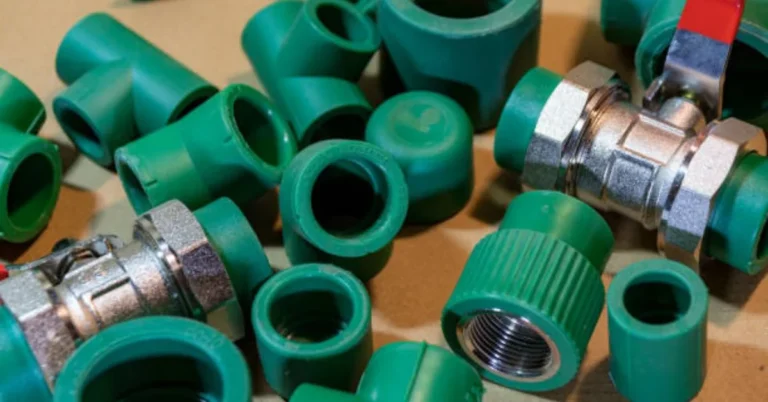
How Many Calories Are in a Vape- Vaping has become a widespread alternative to smoking traditional tobacco, often marketed as a cleaner or less harmful choice. While much discussion focuses on nicotine levels, flavors, and potential health effects, a growing number of people are curious about another aspect: the calorie content of vaping. This is especially relevant for individuals who monitor their calorie intake for health, weight management, or athletic performance.
It may seem unusual to think about calories in something you inhale rather than eat, but since vape liquids contain substances like vegetable glycerin (VG) and propylene glycol (PG)—both of which have caloric value—the question becomes valid. Even though you aren’t drinking or chewing the vapor, some portion of these ingredients can be absorbed by the body, potentially contributing to caloric intake, though in very small amounts.
In this guide, we will break down what contributes to calories in vape liquids, how your body interacts with those calories, why the total is usually negligible, and how this compares to other sources of hidden calories. We will also address common misconceptions, the role of flavorings, and how calorie concerns should (or should not) influence your decision to vape.
1. Understanding the Basics of Calories: Calories Are in a Vape
Before we look at vaping specifically, it helps to clarify what a calorie actually is in nutritional terms. A calorie is a unit of energy—the amount of energy needed to raise the temperature of one gram of water by one degree Celsius. In food and drink, calories come from macronutrients: carbohydrates, proteins, and fats.
When we talk about calories in a vape, we’re not referring to nutrients in the traditional sense, because e-liquids are not meant for oral nutrition. However, since VG and PG are technically carbohydrate-based substances, they contain energy value. Whether or not this energy is absorbed in significant amounts through inhalation is the main question we need to address.
2. What’s in Vape Juice That Could Contain Calories
Vape liquids (also called e-liquids or vape juice) are usually made of three main components:
- Vegetable Glycerin (VG): A plant-derived, thick, slightly sweet liquid used to produce vapor clouds. VG has about 4 calories per gram, similar to other carbohydrates.
- Propylene Glycol (PG): A thinner, odorless, and flavor-carrying liquid. PG also has roughly 4 calories per gram.
- Flavorings and Nicotine: These may be naturally or synthetically derived. Flavorings typically contain minimal caloric content, while nicotine itself has negligible calories.
Because VG and PG make up the majority of most e-liquids, they are the primary source of any calories a vape might technically have.
3. How Many Calories Are Actually in a Vape Puff
If we calculate purely based on the ingredients, a typical milliliter of e-liquid might contain around 4–5 calories, mostly from VG and PG. However, when vaping, you are not ingesting these calories in the same way you would by drinking or eating them.
Most of the VG and PG in vapor is exhaled, and the small fraction absorbed into the mouth, throat, and lungs is minimal. Even if we assume that a portion of each puff’s vapor is absorbed into the bloodstream, the total daily caloric intake from vaping is likely less than what you’d get from chewing a stick of sugar-free gum.
4. Does Vaping Affect Weight or Diet Goals?
From a strict calorie perspective, vaping is extremely unlikely to impact weight or diet plans. The amount of caloric absorption is too small to make a noticeable difference in daily energy balance.
However, there are indirect ways vaping could influence diet and weight: Calories Are in a Vape
- Appetite Changes: Nicotine is known to suppress appetite, which can lead to reduced food intake.
- Taste Preferences: Sweet or dessert-flavored vapes may increase cravings for sugary foods in some users.
- Oral Fixation: The habit of vaping might replace snacking behaviors for some, which could reduce calorie intake indirectly.
5. Comparing Vape Calories to Common Food and Drink
For context: Calories Are in a Vape
- 1 ml of e-liquid ≈ 4–5 calories (theoretical, minimal absorption)
- 1 stick of sugar-free gum ≈ 2 calories
- 1 teaspoon of sugar ≈ 16 calories
- 1 slice of bread ≈ 70–80 calories
Even heavy vaping is unlikely to equal the calories in a single slice of bread.
6. Misconceptions About Vape Calories: Calories Are in a Vape
Some people worry that the sweet flavor of a vape means it is “full of sugar” and therefore high in calories. In reality, most e-liquids use artificial or natural non-caloric flavorings that mimic sweetness without sugar content.
Another misconception is that because VG is sweet, vaping it in large amounts could cause weight gain. While VG does have calories when ingested, the inhaled amount and absorption rate are so low that this is not a realistic concern.

7. Health Considerations Beyond Calories
While the calorie content in vaping is negligible, this does not mean vaping is risk-free. The more important considerations involve:
- Respiratory health effects from inhaling vaporized substances
- Nicotine addiction potential
- Unknown long-term effects of inhaling certain flavoring agents
Focusing solely on calories might distract from these broader health implications, which should weigh more heavily in decision-making.
8. Should Calorie Counters Care About Vape Calories?
For someone carefully tracking every calorie—such as a professional athlete, bodybuilder, or individual on a strict medical diet—the caloric contribution of vaping is still unlikely to require tracking. The numbers are so low that they fall into the margin of error of most daily calorie calculations.
However, those interested in the complete breakdown of everything entering their body might still want to note that VG and PG have caloric value, even if the actual absorption from inhalation is trivial.
9. Final Perspective: Calories Are in a Vape
When people ask “How many calories are in a vape?”, the truthful answer is: yes, there are calories in the main ingredients of vape juice, but the actual amount your body absorbs from vaping is so small that it is not nutritionally significant. In terms of energy intake, it’s negligible compared to even the smallest snack.
The more relevant conversation about vaping should revolve around nicotine’s effects, potential respiratory impacts, and the role of vaping in either quitting smoking or creating new habits. Calories, in this context, are a minor footnote.
Conclusion: Calories Are in a Vape
A vape contains ingredients—mainly VG and PG—that have caloric value on paper, but the amount absorbed during normal use is tiny. Even frequent vaping won’t meaningfully affect your calorie intake or body weight. While it’s useful to understand the technical facts about vape calories, the bigger health considerations lie elsewhere: nicotine addiction risk, respiratory health, and the unknowns of long-term vapor inhalation. For anyone managing weight or diet, vape calories are not something to lose sleep over—but vaping’s broader health effects still deserve careful attention.

5 Frequently Asked Questions (FAQs): Calories Are in a Vape
1. Do flavored vapes have more calories than unflavored ones?
Not significantly. Most flavorings used in vapes are non-caloric or used in such small amounts that they don’t change total calories.
2. Can vaping cause weight gain from calories?
No. The caloric absorption is too low to impact weight. Nicotine may actually suppress appetite in some individuals.
3. Is vegetable glycerin in vapes the same as in food?
Yes, it’s the same compound used in food and cosmetics, but inhalation delivers much smaller amounts than eating it.
4. Should I log vape calories in my diet tracker?
For most people, it’s unnecessary because the absorbed calories are negligible compared to normal food intake.
5. Are vape calories harmful?
The calories themselves are not harmful. Health concerns with vaping come from nicotine and inhaling vaporized substances, not caloric value.
For more information, click here.







